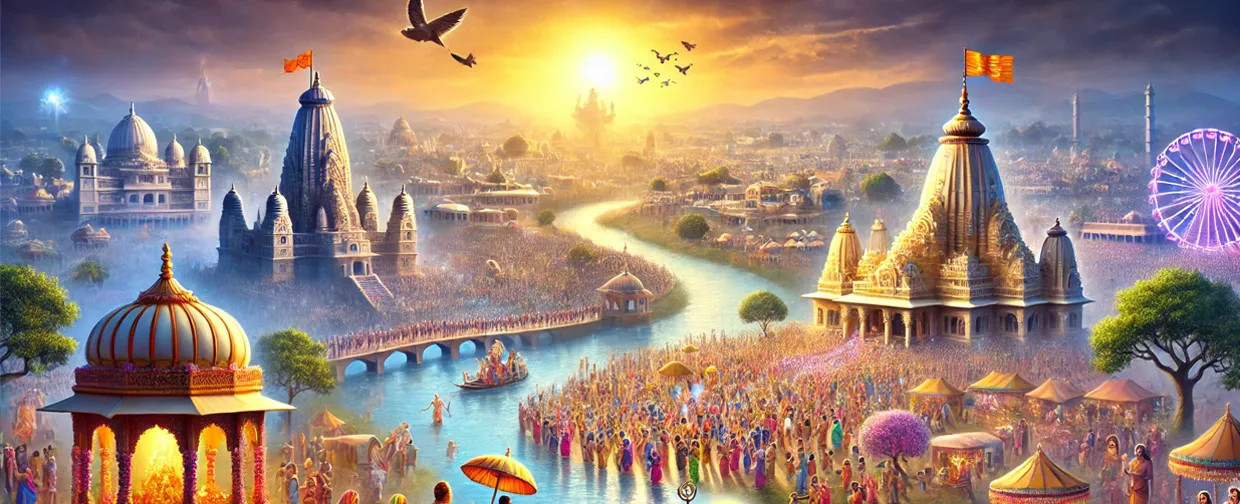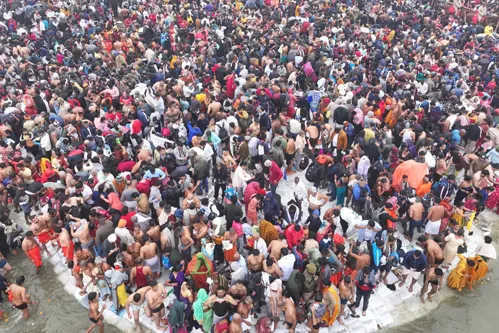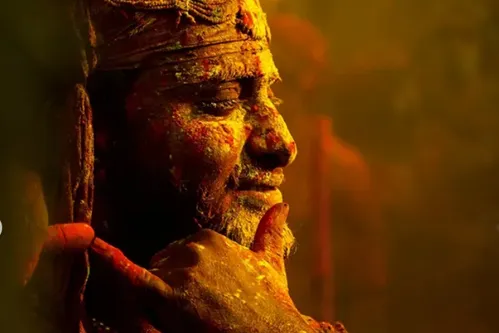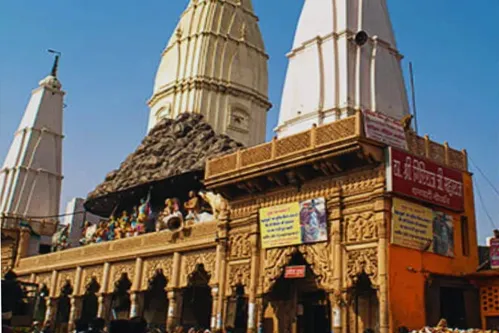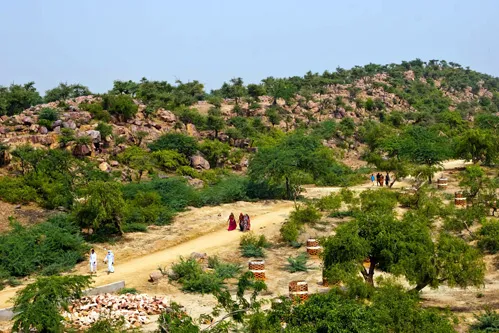🔱 Kumbh Mela: The Grand Path to Moksha
✅ Locations: Haridwar, Prayagraj, Ujjain, Nashik
✅ Frequency: Every 12 years (Ardha Kumbh every 6 years)
✅ Main Activities: Holy river bathing, spiritual discourses, charity
✅ Key Benefits: Liberation from sins and attainment of Moksha
Significance of Kumbh Mela
Significance of Kumbh Mela
Kumbh Mela is the largest spiritual gathering in Hinduism, where millions of devotees take a dip in sacred rivers. It is believed that bathing in these holy waters washes away past sins and leads one closer to liberation.
"Kumbh is a festival of self-purification that destroys all accumulated sins and paves the way to salvation."
🌿 Vrindavan: The Land of Love and Devotion
✅ Location: Mathura district, Uttar Pradesh
✅ Frequency: Open for devotion and service throughout the year
✅ Main Activities: Bhakti (devotion) to Radha-Krishna, Sankirtan (chanting).
✅ Key Benefits: Inner purification, divine love, and devotion
According to religious narratives, Krishna himself assured that Vrindavan is self-sufficient in terms of spiritual purification. This belief is why many devotees in Vrindavan do not feel the need to travel to Prayagraj for the Kumbh Mela, where a holy dip in the Sangam (confluence of rivers) is considered spiritually uplifting.
Significance of Vrindavan
Vrindavan is the sacred land of Lord Krishna’s pastimes, filled with divine love and devotion. Every corner of this town resonates with the sound of "Radhe Radhe.
"If Kumbh is the path to purification, then Vrindavan is the ocean of divine love, where devotees immerse themselves in Krishna consciousness."
A famous saying in spiritual circles highlights Vrindavan's supreme sanctity over even the holiest pilgrimage sites like Prayagraj: "Prayagraj khud Vrindavan ki anumati ka pratiksha karte hai uske pavan raj me pravesh karne ke liye." ("Prayagraj itself waits for Vrindavan's approval before entering its sacred dust.")
This is based on a well-known legend where Prayagraj, the holy confluence of Ganga, Yamuna, and Saraswati, personified as a celestial being, seeks purification in the dust of Vrindavan before every Kumbh Mela. It symbolizes that while Kumbh Mela offers external purification through river baths, Vrindavan grants the ultimate internal purification through Krishna’s divine presence
🛕 Govardhan: The Symbol of Bhakti, Service, and Surrender
🛕 Govardhan: The Symbol of Bhakti, Service, and Surrender
✅ Location: Near Vrindavan, Uttar Pradesh
✅ Frequency: Open for pilgrimage and service year-round
✅ Main Activities: Govardhan Parikrama (circumambulation), Annakut festival, cow service
✅ Key Benefits: Krishna’s special blessings and spiritual elevation
Significance of Govardhan
Govardhan Parvat is the sacred hill that Lord Krishna lifted on His little finger to protect the residents of Vrindavan from Lord Indra’s wrath. It is worshipped as Krishna’s own divine form, and performing Govardhan Parikrama grants immense spiritual merit.
"If Kumbh signifies purification and Vrindavan embodies devotion, then Govardhan represents complete surrender to Krishna."
🌟 Comparison: Kumbh vs. Vrindavan vs. Govardhan
| Feature | Kumbh Mela 🚩 | Vrindavan 🌿 | Govardhan Parvat 🛕 |
|---|---|---|---|
| Main Purpose | Self-purification and Moksha | Love and devotion | Service, surrender, and Krishna’s shelter |
| Frequency | Once every 12 years | Open year-round | Open year-round |
| Location | Haridwar, Prayagraj, Ujjain, Nashik | Mathura (UP) | Near Vrindavan |
| Key Activities | Holy river bathing, saints’ discourses | Bhajans, Sankirtan, cow service | Parikrama, Annakut, Govardhan worship |
| Spiritual Benefits | Freedom from sins and rebirth | Attainment of divine love and Bhakti | Krishna’s grace and spiritual elevation |


